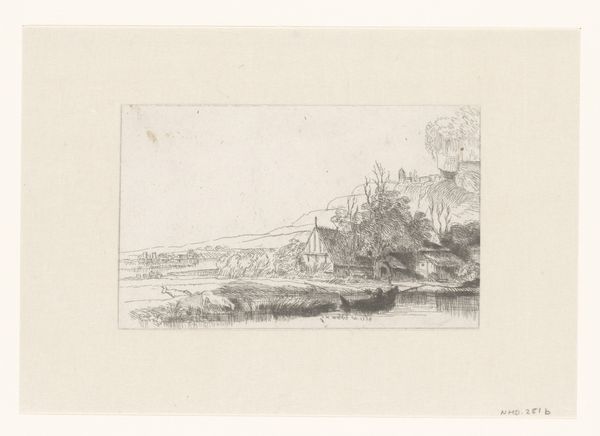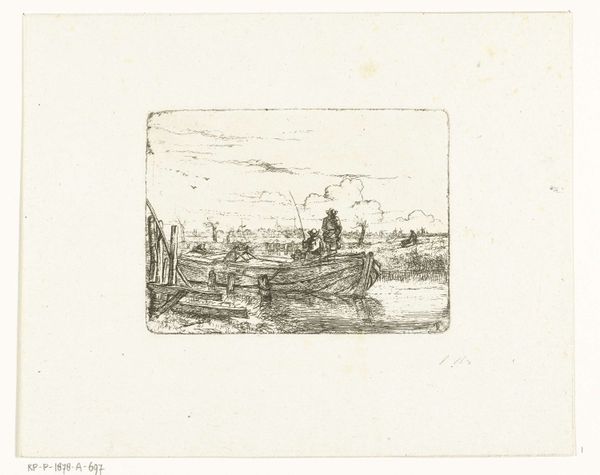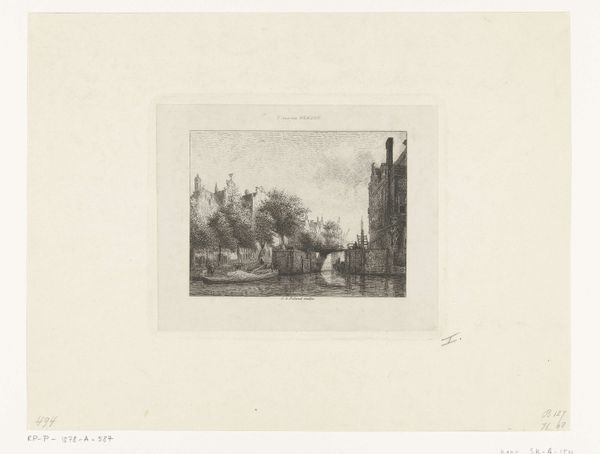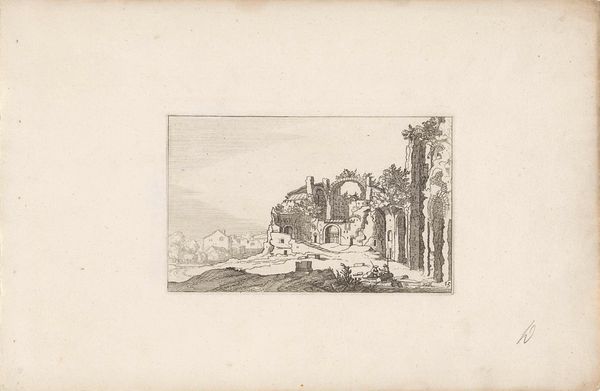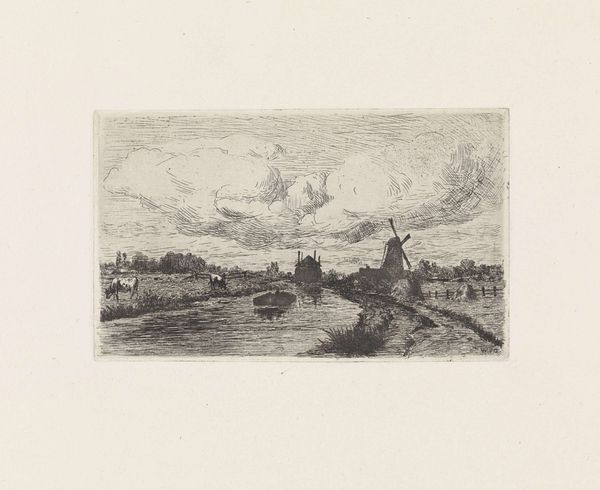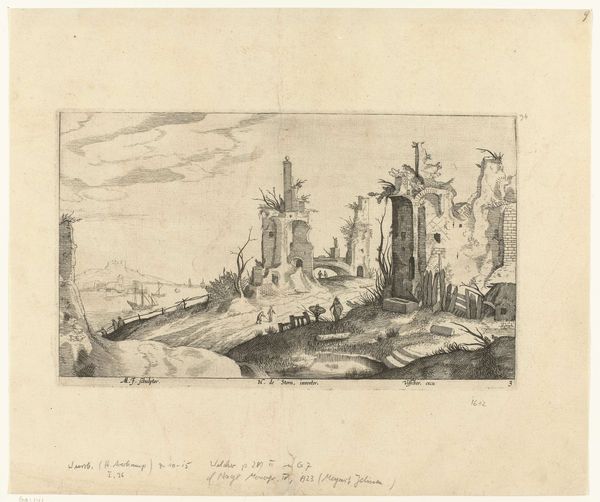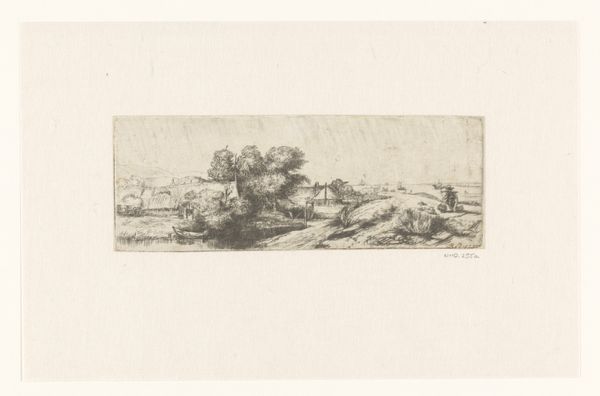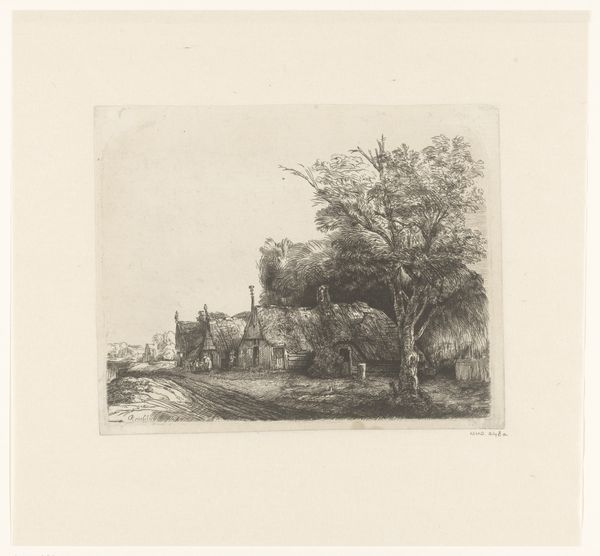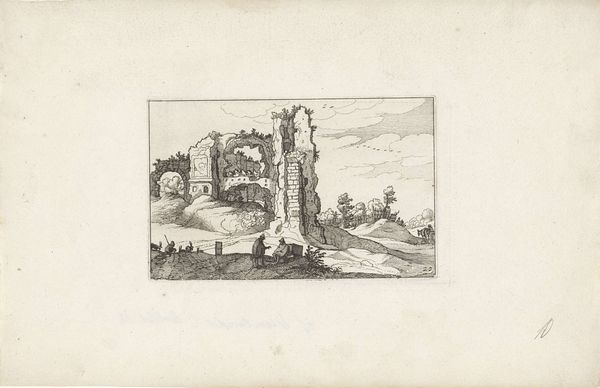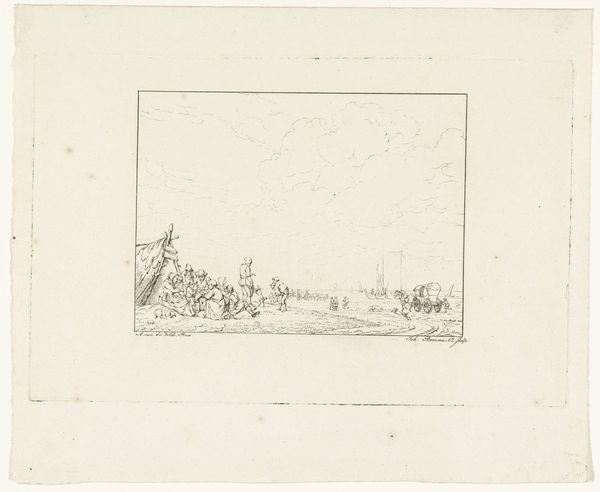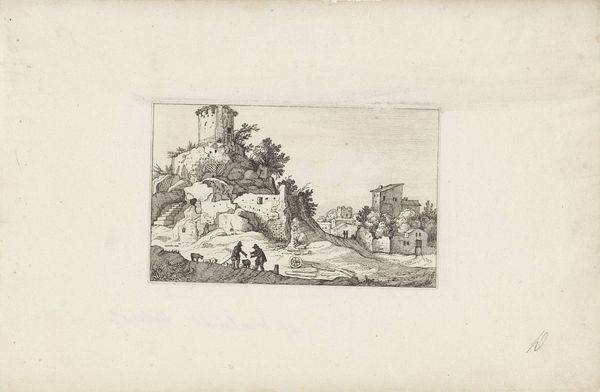
etching, engraving
#
dutch-golden-age
#
etching
#
old engraving style
#
landscape
#
engraving
Dimensions: height 67 mm, width 160 mm
Copyright: Rijks Museum: Open Domain
This is ‘Scheepswerf bij laag water’ – or ‘Shipyard at low tide’ – an etching made by Cornelis Claesz. van Wieringen in the early 17th century. Van Wieringen was a Dutch Golden Age painter, draughtsman, and printmaker, best known for his marine paintings. The etching technique would have involved covering a metal plate with a waxy, acid-resistant ground. The artist then scratched an image into the ground, exposing the metal. The plate was then immersed in acid, which bit into the exposed lines, creating grooves. Ink was applied and the surface wiped clean, leaving ink only in the etched lines. The printmaker would then press paper onto the plate, transferring the ink and creating the print. Notice how the fine, precise lines bring the scene to life: the textures of the architecture, the patterns of the water, and the human figures. But this wasn’t just art for art's sake. Van Wieringen’s work was deeply embedded in the booming Dutch maritime industry. It reminds us that art and craft are entwined with social context, labor, and the spirit of an age.
Comments
No comments
Be the first to comment and join the conversation on the ultimate creative platform.
